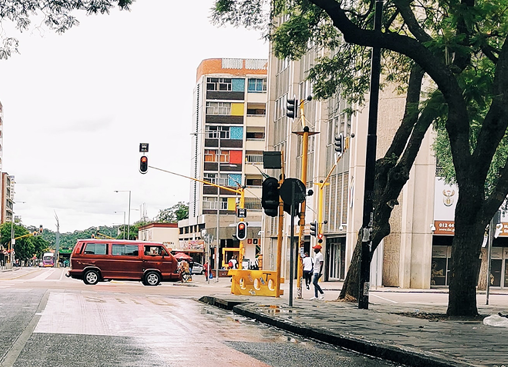Resource scarcity has historically contributed to – and prolonged – various conflicts, both between states, as well as between communities or groups within states. This trend continued in 2019, exacerbated by factors such as climate change, expanding populations, and resource shortages – including water, oil and land. Resource scarcity and worsening environmental conditions will continue to play a prominent role in driving conflict dynamics across the world in the coming years.
WATER WARS
Water scarcity has fuelled longstanding disputes, due the prominent role that water plays in various sectors such as agriculture and fishing. While Southeast Asian countries dispute maritime boundaries, communities in Sub-Saharan Africa clash over water access in drought-affected areas. Militant groups – such as the Houthis in Yemen – use water as a weapon to force compliance among populations and gain political leverage, while indigenous populations in Latin America oppose large extractive companies, which they accuse of diverting and polluting water resources. In 2019, the UN estimated that around 75,000 people die annually in conflicts over water. As global warming exacerbates water scarcity in the coming years, such conflicts will likely intensify.
Case Studies
- Amid severe drought and an ongoing water crisis in India, communities in Chennai, Tamil Nadu State, and Madhya Pradesh State, clashed over access to water in June and July 2019. Security personnel were deployed to guard water facilities and escort tanker drivers amid attacks, while clashes between residents in affected areas resulted in multiple injuries. An estimated 21 major cities could run out of water in 2020. With the ongoing impact of global warming, such shortages which will likely lead to further, widespread clashes in the coming years.
- China, the Philippines, Vietnam, Brunei, Taiwan and Malaysia have historically made overlapping claims to territory in the South China Sea (SCS) – a vital shipping route, also accounting for over 12 percent of global commercial fishing. Due to competing claims, fishing in the SCS has also historically driven clashes between Chinese vessels – often escorted by the Chinese coast guard – and other fishing vessels. Over-fishing and the destruction of marine life in the area will likely drive further clashes in the coming years, particularly as countries continue to expand their fisheries in disputed territories. This, in turn, may exacerbate geopolitical and military tensions already present in the region.
|
OIL KINGS
Oil remains a coveted resource due to its finite nature. Oil exploitation has prompted a rush for access to remaining stores, and a search for new reserves. Both state and non-state actors have clashed over control of oil reserves, particularly in the oil-rich regions of the Middle East and North Africa. In Latin America and the Niger Delta, commercial operators and communities have engaged in disputes over the environmental impact of oil drilling operations, as well as compensation for foreign oil operations occurring on indigenous land. While oil demand fluctuated in 2019, it remains a vital component of the global economy, and will likely continue to drive competition and conflict in the coming months.
Case Studies
- In Nigeria’s Niger Delta, local militias and militant groups have engaged in sabotage and kidnapping activities against oil drilling companies and their personnel operating in the area. These groups claim that local communities have not received any benefits from the government-granted concessions, and have periodically threatened to revive their armed campaign against commercial interests in the area.
- The Libyan conflict between the Libyan National Army (LNA) and the Government of National Accord (GNA) has frequently resulted in skirmishes for control of Libya’s south-western oil fields. Ongoing skirmishes have prompted a deterioration of the security environment in oil-rich areas, and clashes have led to suspended production at a number of oil fields in 2019. As fighting will likely continue in the coming months, oil fields will remain volatile operating environments – and high-value targets – in the coming months.
|
LAND GRABS
Access to arable and grazing land continues to drive tensions between rival communities, as well as between communities and commercial operators. Commenting on the interconnectedness of resource scarcities driven by climate change, Gabrielle Reid, a Senior Associate on S-RM’s Africa desk, notes that “water scarcity drives migration, resulting in increased competition over grazing lands between communities.” This, she adds, can prompt flashpoints of conflict among communities competing for already-scarce resources, particularly in sub-Saharan Africa. Climate change will likely exacerbate such conditions over the coming years.
Case Studies
- In 2019, the Fulani and Dogon communities in central Mali continued to clash over grazing land amid a severe drought in the region. Dogon communities have accused the Fulani of encroaching on their farmland to feed their animals, while the Fulani have accused the Dogon of killing and stealing their cattle. In March 2019, at least 160 people when alleged armed Dogon members attacked a Fulani village. This conflict is longstanding, and will likely continue as climate change increases the potential for prolonged drought in the Sahel.
- In the Brazilian Amazon, ongoing forest fires in 2019 have largely reduced the area of habitable land for around 148 indigenous communities. Brazilian President Jair Bolsonaro’s continued promotion of commercial agriculture in the region – which has led to deforestation and intentional burning of trees – has further threatened indigenous land. In 2019, this prompted several protests by indigenous communities, who demonstrated in urban centres to denounce farmers’ encroachment onto historically-claimed land, as well as the government’s perceived inaction on combatting forest fires. While these protests have been peaceful, precedent indicates that escalating tensions between indigenous groups and farmers can lead to violent clashes. As deforestation and forest fires continue to reduce habitable land in the region, the threat of such conflict will likely increase in the coming months.
|
Read our 2020 Political Violence Special Edition for more global security insights.









 Email Erin
Email Erin






 @SRMInform
@SRMInform
 S-RM
S-RM
 hello@s-rminform.com
hello@s-rminform.com

